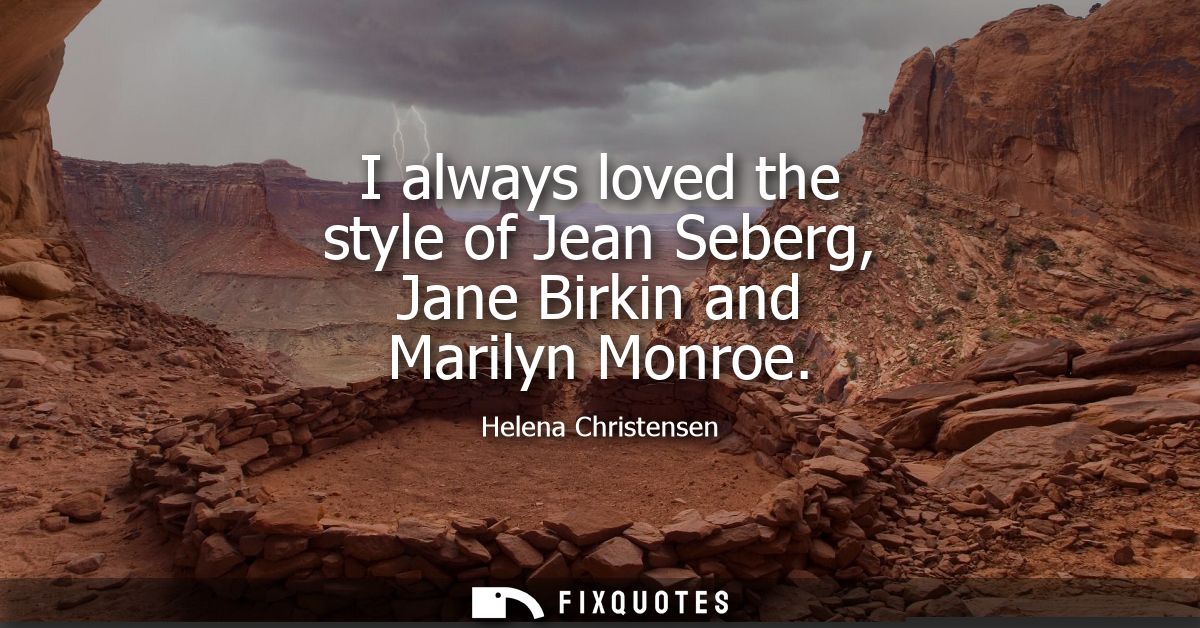"I always loved the style of Jean Seberg, Jane Birkin and Marilyn Monroe"
About this Quote
Helena Christensen’s touchstones, Jean Seberg, Jane Birkin, and Marilyn Monroe, map a concise atlas of twentieth-century femininity and style. Together they form a spectrum: pared-back modernity, bohemian insouciance, and luminous Hollywood glamour. Loving their style signals a preference for elegance that feels lived-in rather than contrived, and for charisma that emerges from character as much as clothing.
Jean Seberg embodies a clean, minimalist vocabulary: the gamine crop, Breton stripes, crisp shirts, cigarette pants. Her presence suggests freedom and clarity, an almost boyish directness with unmistakable sophistication. Jane Birkin adds a note of laissez-faire sensuality: rumpled denim, lace camisoles, basket bags, beat-up tees elevated by an easy posture and a knowing smile. She is the patron saint of effortlessness, proof that allure can come from a fringe, a scuffed boot, and an unbuttoned placket. Marilyn Monroe completes the triangle with sculpted glamour: satin halters, curve-tracing knits, bias-cut dresses, platinum waves, and a cinematic glow that turns vulnerability into magnetism.
Admiring all three is less about eclectic taste than about a balanced formula: restraint + spontaneity + radiance. It’s a blueprint for style that moves from street to spotlight without costume changes, where the same slip dress can be worn with bare skin and freckles or with lacquered lips and heels. It privileges timeless silhouettes, tactile fabrics, and pieces that invite rewear, white tees, tailored trousers, trench coats, slinky eveningwear, animated by attitude rather than trend.
For Christensen, a model and photographer, these influences also speak to the camera. Seberg gives line and shape, Birkin gives movement and ease, Monroe gives light-catching curves and myth. The result is an aesthetic that feels intimate yet iconic, European yet universal. It celebrates the power of small details, a fringe, a hemline, a red mouth, to tell a whole story, and affirms that style endures when it reveals the person rather than concealing her.
About the Author

